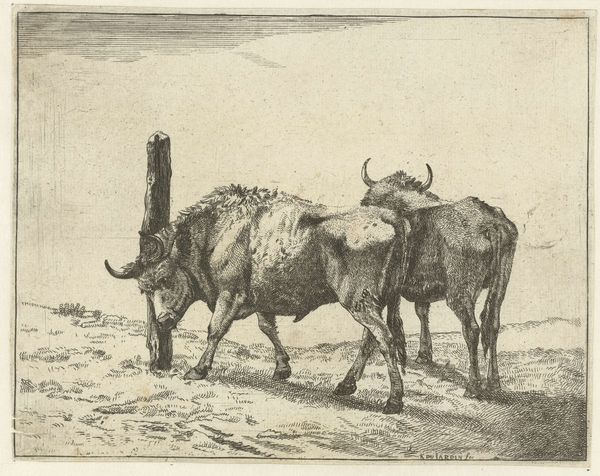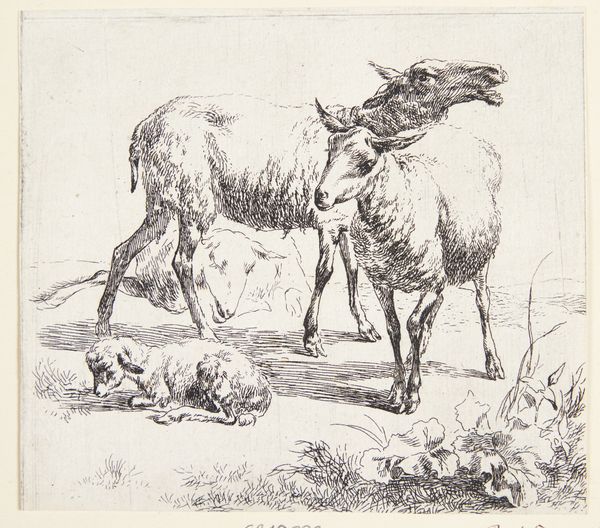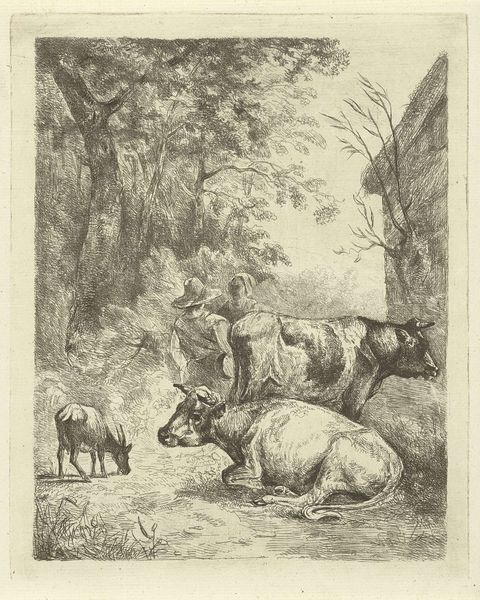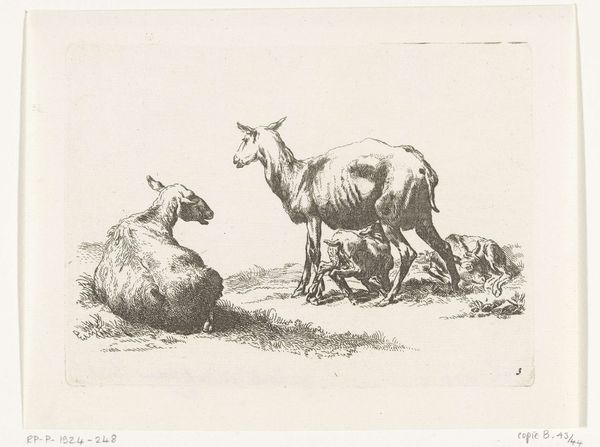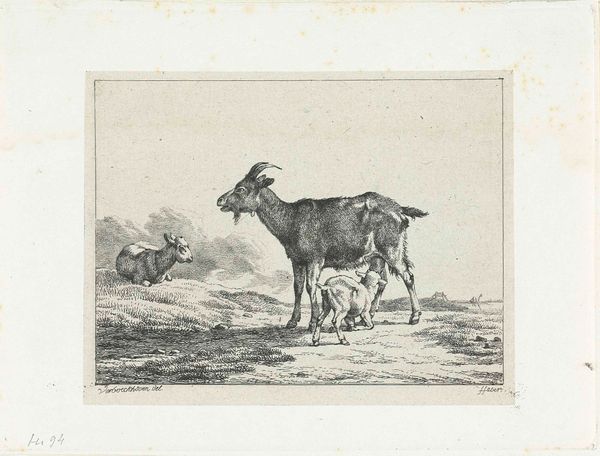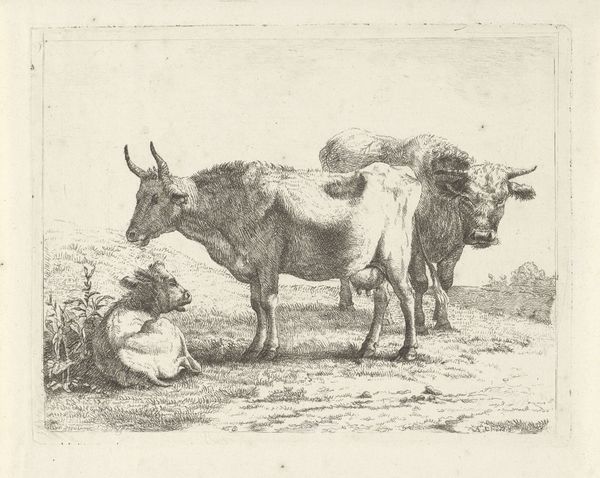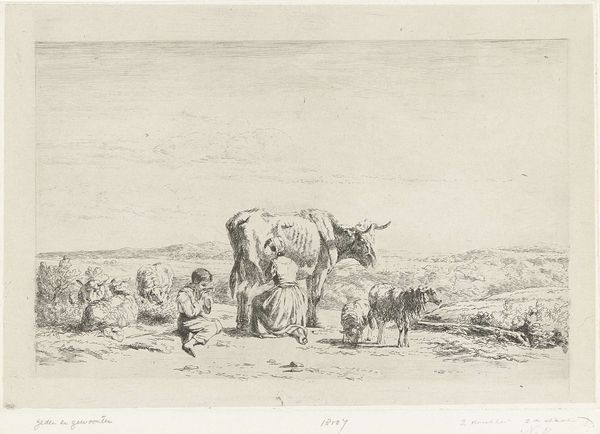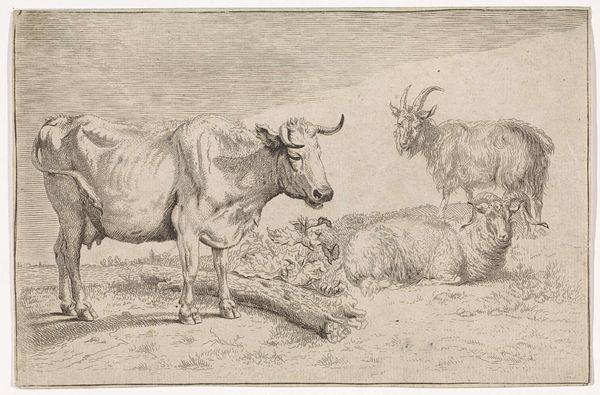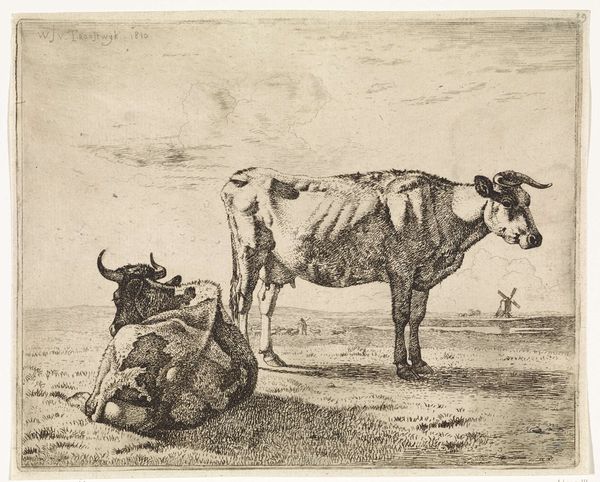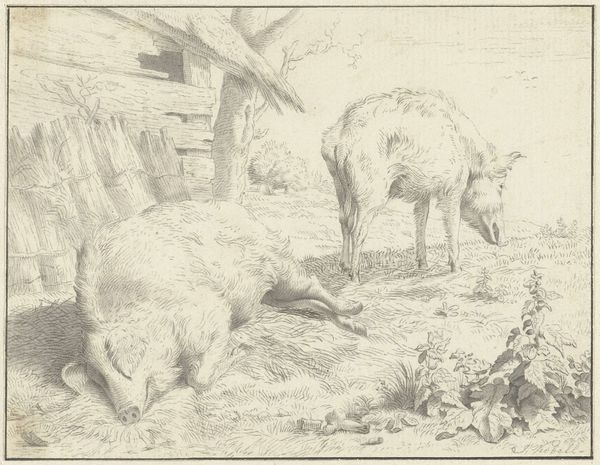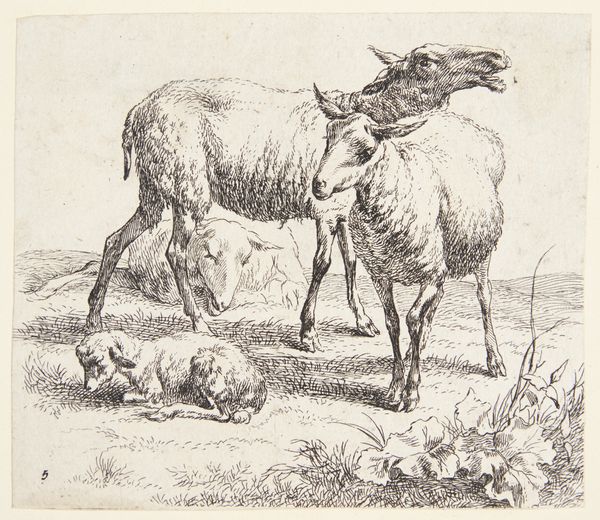
drawing, print, etching
#
drawing
#
animal
# print
#
pen sketch
#
etching
#
landscape
#
genre-painting
#
realism
Dimensions: height 120 mm, width 164 mm
Copyright: Rijks Museum: Open Domain
Editor: So, this etching, "Twee staande geiten en een jonge geit" from around 1666-1726, currently at the Rijksmuseum, depicts two standing goats and a young goat. The style feels so simple. How do you interpret this work? Curator: Well, on the surface, it seems like a simple pastoral scene. But what does it mean to represent the rural in the urban consciousness of the Dutch Golden Age? The print speaks to the intersections of urban/rural, and nature/culture and to the human exploitation of animals in 17th-century Netherlands. Considering its potential function as part of a bound collection of prints, how does the artist engage with popular notions of nature, ownership, and perhaps even femininity, in the daily lives of its intended audience? Editor: That's fascinating. I never thought about it as speaking to ownership or even femininity. The naturalism of the etching just drew me in. Curator: Consider the implied narratives embedded in genre scenes and landscapes during that time. Who benefited from the animal represented? How were those benefits visualized, if at all? Editor: It's about more than just pretty landscapes. It's tied to cultural issues! Thanks for pointing this out, it changes how I see such works. Curator: Exactly! Art reflects, reinforces, and sometimes even resists the power dynamics of its time. Editor: I'm starting to see the potential layers here. Thanks for that critical nudge. Curator: The art of seeing is the art of questioning, isn’t it? Now go, question everything.
Comments
No comments
Be the first to comment and join the conversation on the ultimate creative platform.

